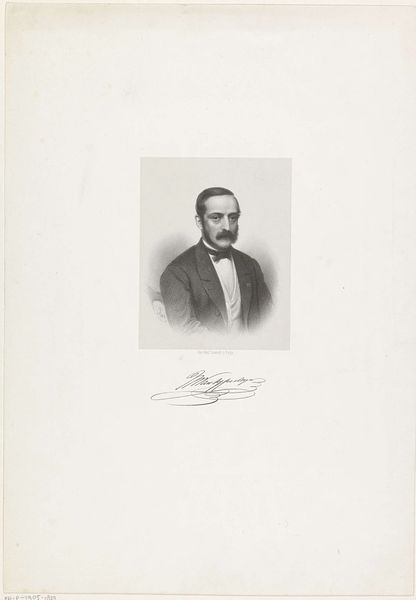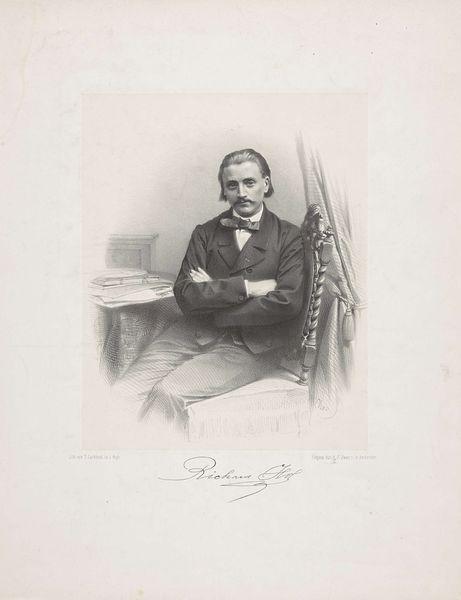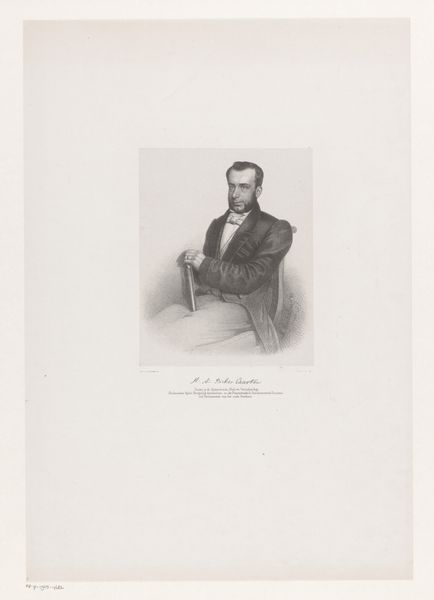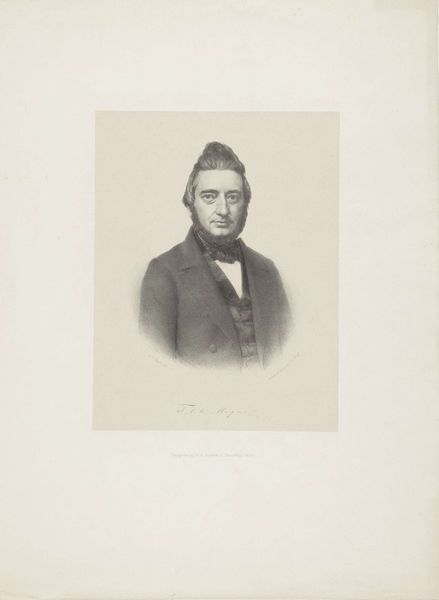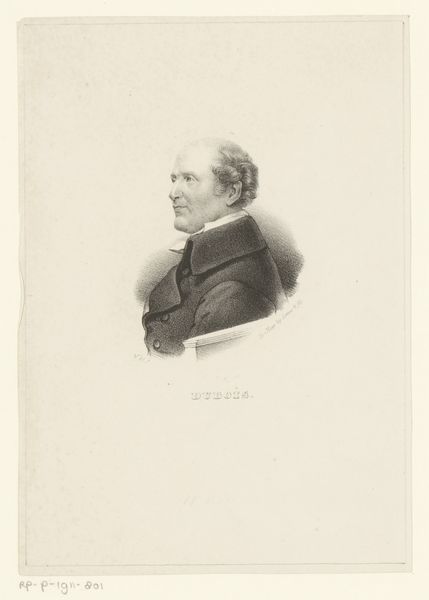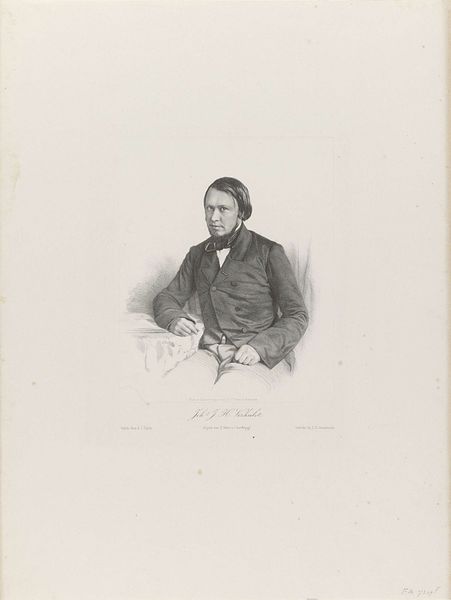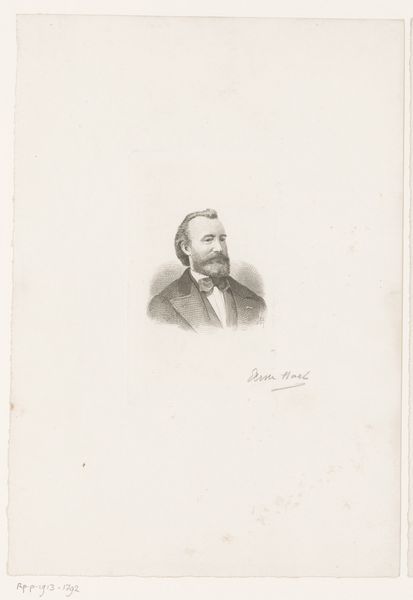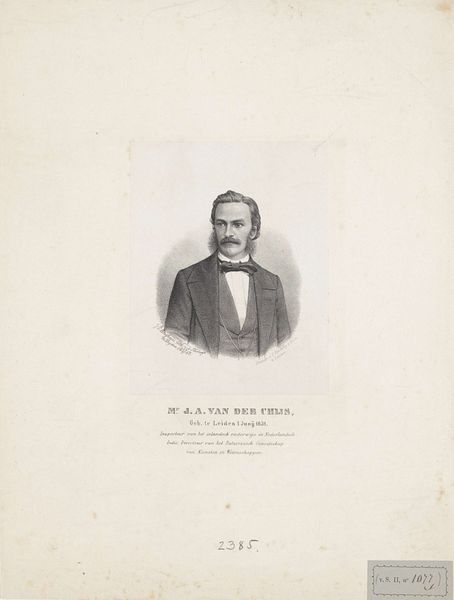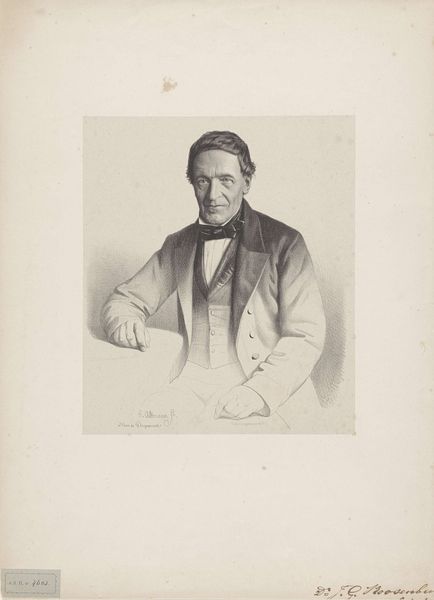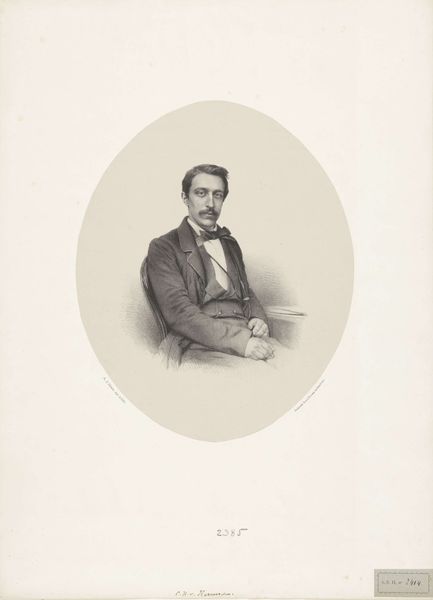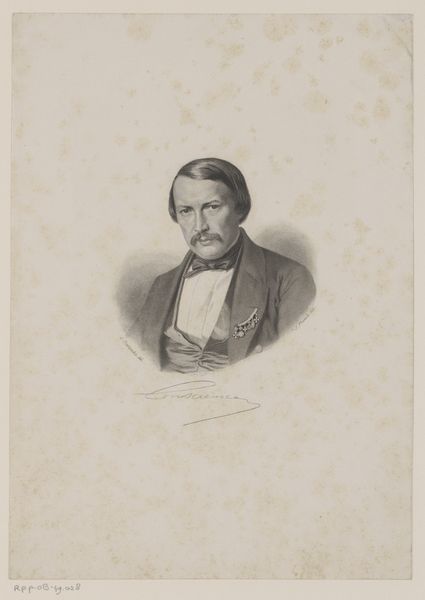
#
pencil drawn
#
amateur sketch
#
light pencil work
#
shading to add clarity
#
pencil sketch
#
old engraving style
#
idea generation sketch
#
pencil drawing
#
limited contrast and shading
#
pencil work
Dimensions: height 545 mm, width 365 mm
Copyright: Rijks Museum: Open Domain
Adrianus Johannes Ehnle created this portrait of Johann Baptist Pischek using a technique called lithography. The process begins with a smooth stone, on which the artist draws with a greasy crayon. The stone is then treated with acid, which fixes the drawing. Ink adheres to the drawn areas and is repelled by the wet, blank areas. Paper is then pressed to the stone, transferring the image. Notice how the artist created a wide tonal range, using fine lines to create the illusion of depth and texture, from the sheen of Pischek’s jacket to the soft fabric of his waistcoat. Lithography democratized image-making in the 19th century, allowing for relatively quick and cheap reproductions. As such, it was often used for commercial purposes, like newspapers, advertising, and sheet music. In this context, it helped to develop a visual culture around celebrity, as likenesses of famous performers like Pischek became widely available. This print is not just a portrait, but also a document of how mass media reshaped social life.
Comments
No comments
Be the first to comment and join the conversation on the ultimate creative platform.
